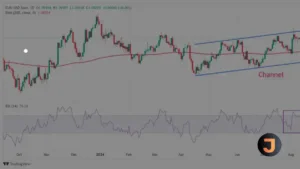Shifting Gears: Electric Cars Impacting Global Petrol Demand and Refinery Margins
The landscape of global fuel consumption is undergoing a significant transformation, with electric cars playing a pivotal role. Analysts are forecasting that the growth of global petrol demand could halve in 2024, a trend largely attributed to the increasing adoption of electric vehicles (EVs) in major markets such as China and the United States. This shift comes alongside a stabilization of consumption patterns post the COVID-19 pandemic surge.
According to Wood Mackenzie, a consultancy firm, the anticipated rise in demand is a modest 340,000 barrels per day (bpd), bringing the total to 26.5 million bpd this year. This marks a significant deceleration from the 700,000 bpd growth observed last year. The consultancy highlights that China is approaching its peak in transport fuel demand, while the United States has already surpassed it. “Penetration of electric vehicles has been increasing in US and China,” noted Woodmac analyst Sushant Gupta, projecting a mere 10,000 bpd increase in Chinese demand due to higher EV uptake.
Rystad Energy supports this outlook, estimating global gasoline demand at approximately 26 million bpd in 2024, with an increase of about 300,000 bpd. Mukesh Sahdev, an analyst at Rystad, points to the consumption boom following the pandemic as a key driver of the 2023 figures. Meanwhile, the International Energy Agency (IEA) has reported that China is expected to account for over half of all EV sales this year.
In contrast, countries like India and Indonesia are experiencing a surge in gasoline demand due to robust car sales, economic growth, and lower EV penetration. India’s petrol consumption is projected to reach a new high of 39.2 million tons (908,000 bpd) by March 2025.
MARGIN PRESSURE
The rise of electric cars is not without consequences for refinery margins. In the United States, gasoline consumption has declined since peaking in 2018, with analysts predicting flat demand in 2024. This trend is expected to maintain pressure on US refining margins beyond the peak summer driving season. European petrol demand is also showing signs of stagnation, further exacerbated by new competition from Nigeria’s Dangote refinery.
Despite these pressures, gasoline margins have seen an 85 percent increase in the United States and Asia this year, buoyed by expectations of robust summer demand and refinery outages. However, higher freight costs and geopolitical tensions are influencing market dynamics, particularly in Europe where Eurobob gasoline values have risen from last year’s averages.
The evolving energy landscape underscores the complex interplay between the rise of electric cars, fluctuating petrol demand, and the resultant impact on refinery margins across the globe.






